
Developed in 1970, the AK-74 in 5.45x39mm was the Soviets' answer to the U.S. Army’s M16 in 5.56mm NATO.
History of the AK-74:
- In the early 1970s, the Soviets needed a smaller-caliber cartridge to answer the U.S. M16 in 5.56mm.
- Following tests, the AK-74 was adopted in 1974. Based on the AKM, its production base was already established.
- Variants included the AK-74 and AKS-74 (folder) Avtomats and the RPK-74/RPKS-74 (folder) light machine guns, plus a shortened AK-74U.
- Compared to the 7.62 AK-47, the AK-74’s accuracy of automatic fire was improved by almost two times, the accuracy of single fire by approximately 50 percent.

Though the Russians may claim that they were working on the low-impulse, sub-caliber, ultimately it was an American designer that spurred the next and perhaps most dramatic stage of AK evolution.
The AK-74, Kalashnikov Avtomat, caliber 5.45mm (GRAU index 6P20) was developed in 1970 by Mikhail Kalashnikov himself and adopted by the Soviet armed forces in 1974. It is the further development of the AKM. The development of the AK-74 is associated with the transition to a new low-pulse cartridge, the 5.45x39mm.
The new guns were first used in Afghanistan during the Soviet–Afghan campaign, then in all conflicts in post-Soviet territory. Currently, the AK-74 Avtomat is in service with the Armed Forces of most countries of the former Soviet Union. It’s a legendary gun with an incredible history full of doubts and intrigues when even its creator was against it. That is its story.
Despite the fact that the AK had very good tactical and technical characteristics, there was a constant feeling of the need to reduce the caliber of the main combat weapons for the modern motorized infantry.
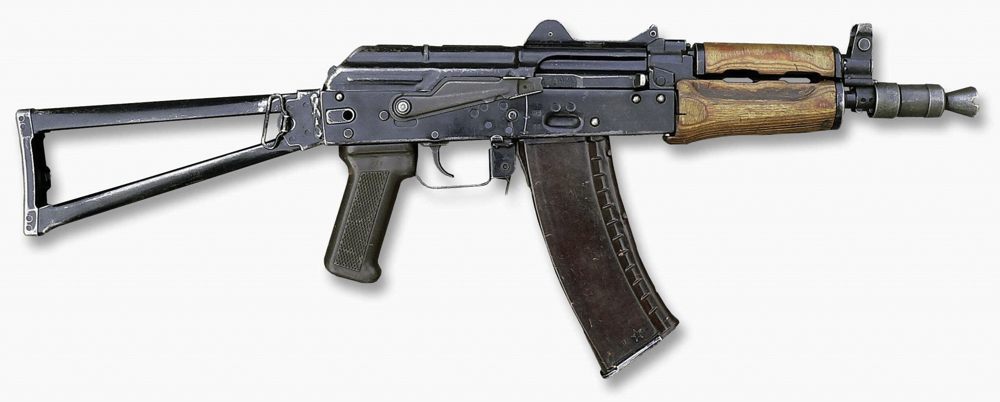
There has been a tendency among Soviet firearms designers and engineers to search for an optimal caliber for modern small arms. By the mid–1950s, the advantages of sub-caliber ammunition were clearly evident. Reduction in powder positively impacted the recoil impulse, which in turn lead to better accuracy, especially in the full-auto rate of fire.
The overall positive test results laid the ground for creation and release of tactical/technical requirements for new types of automatic infantry weapons of smaller caliber. Soviet designers were faced with the task of designing and developing an Avtomat or automatic carbine for the new low-impulse cartridge.
The “bump” to accelerate work in this direction was the appearance of the 5.56mm-caliber M16 rifle in the U.S. Army. The positive experience of using a small caliber cartridge by the Americans in Vietnam forced the Soviets to begin work on development of a similar cartridge for their automatic infantry guns.
As soon as the new ammunition was available and accepted by the Soviet military, it was decided to develop a new family of small arms for the new cartridge.
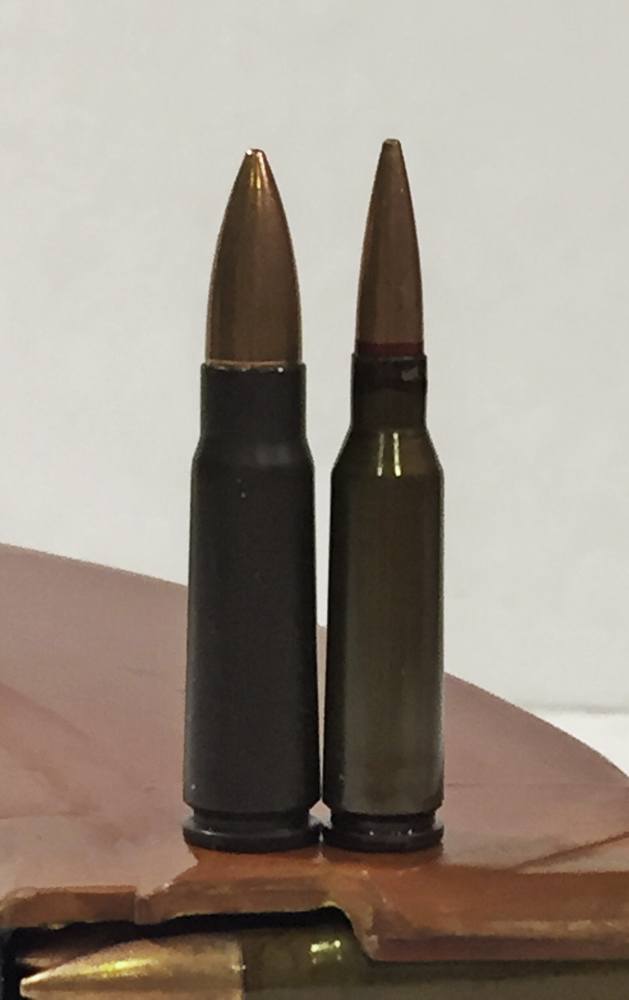
In 1964, the engineers compiled a draft of tactical and technical requirements for a new Avtomat project. The official requirements for the new family of small arms were issued to all firearms designer’s bureaus and organizations in 1966.
Work began in earnest in 1967 to develop a weapon for the new low-impulse, sub-caliber cartridge. By early 1968, ten Avtomats were offered for competitive testing, from which two were selected for the final military tests: yet again, the Kalashnikov Avtomat and Konstantinov CA-006 rifle.
It must be noted that most rifles submitted for trials were of highly advanced designs. The main goal of the new weapon was to significantly improve performance of the existing 7.62mm AKM Avtomat, with emphasis placed on accuracy.
Most rifles that were submitted for evaluation featured so-called “balanced automatic action.” This meant additional weight would travel in the opposite direction to the bolt carrier to counterbalance the recoil and reduce its effect on the gun’s stability.
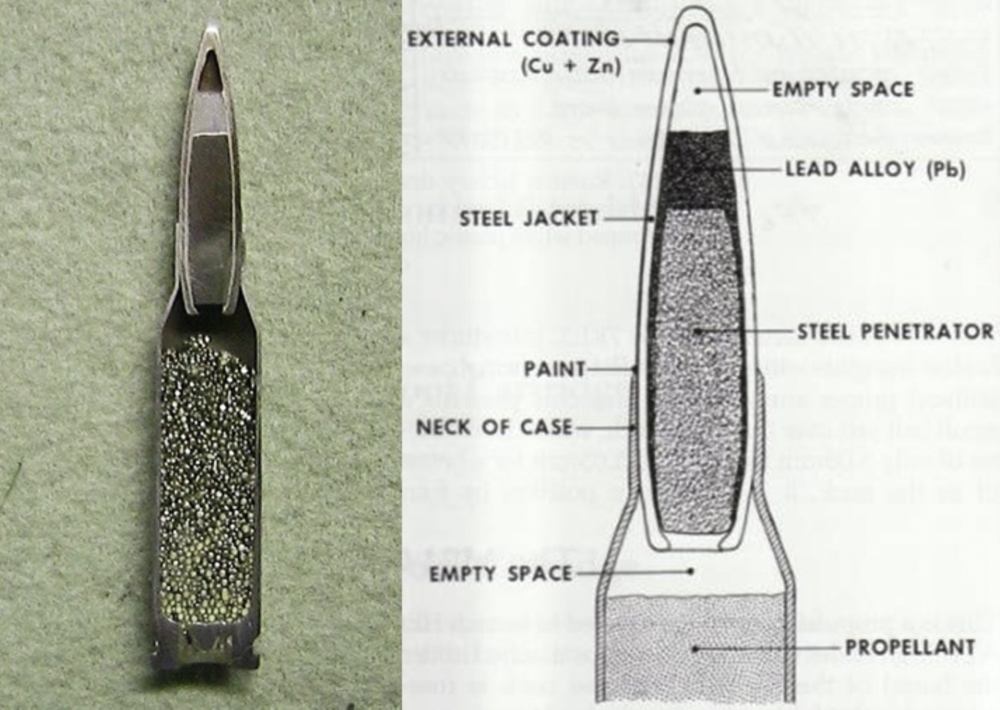
This type of counterbalance is very complicated, negatively affecting the reliability of the gun and making the gun more expensive to produce. The only weapon of the conventional design was the A-3 entry by Kalashnikov’s team. The sample they presented for testing was more or less the old AKM Avtomat, adapted for the new 5.45mm ammunition.
During testing, the main battle unfolded between the Konstantinov CA-006 and the Kalashnikov A-3 Avtomats. As I mentioned before, the product of Kalashnikov’s team A-3 was a deep modification of the AKM, the main battle rifle of the Soviet armed forces.
In the automatic system of the gun, a traditional scheme, only the bolt and barrel were re-designed to accommodate the new 5.45mm ammunition. The Izhevsk Avtomat did not demonstrate overwhelming superiority over its rival during the tests.
However, the Kalashnikov gun had one important advantage: it had an established and proven production base. The design of the AKM was simple and completely integrated into the production cycle of not one but two arsenals (Izhevsk and Tula).
It was familiar to the troops. The cost of development and the ability to quickly establish mass production at the height of the Cold War played a decisive role in choosing an A-3 Avtomat. In addition, the new Kalashnikov sub-caliber gun was lighter than its competitor.
Based on the results of the competition, once again it was decided to adopt the rifle of Kalashnikov design. By decree of the Council of Ministers of January 19, 1974, and the Order of the Minister of Defense of the USSR, the Soviet Army adopted a unified automatic caliber firearm complex of 5.45mm caliber, which received the AK-74 designation for the year of its acceptance.
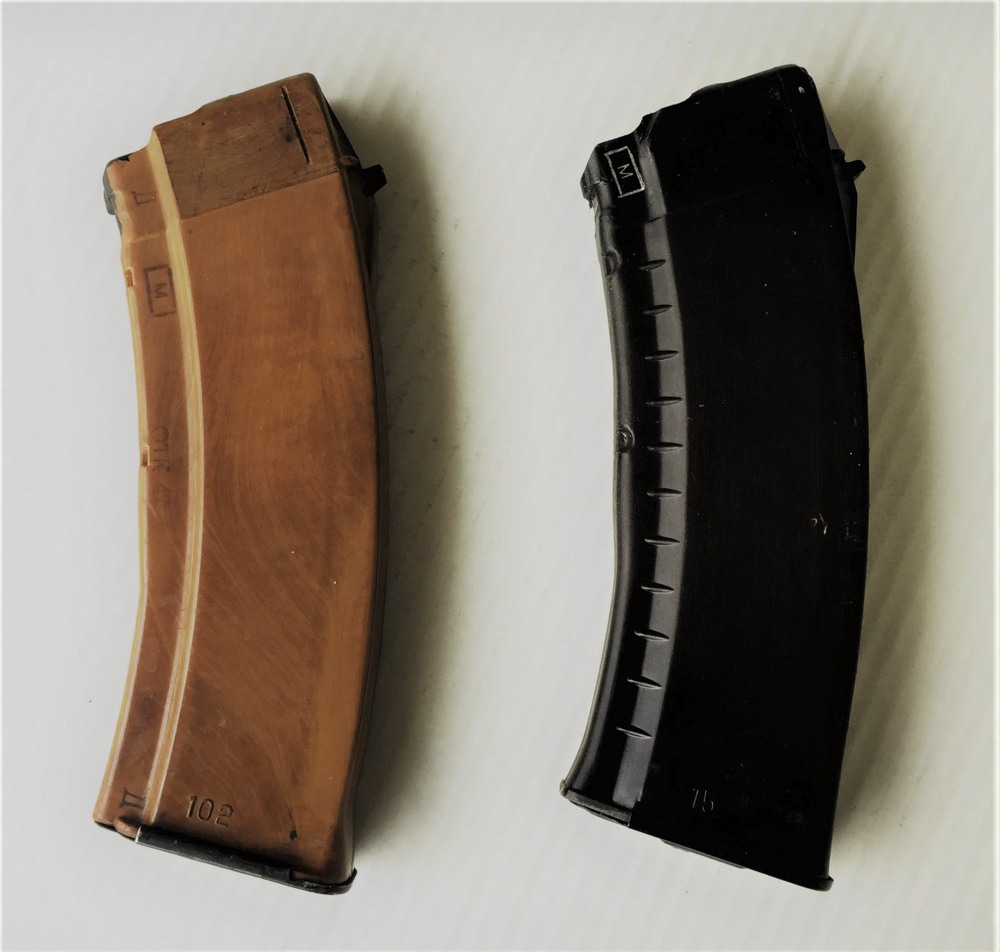
Ultimately, apart from the 5.45mm Kalashnikov Avtomat (with designation AK-74 and GRAU index of 6P20), the entire family of infantry weapons was adopted for service with the Soviet armed forces. The new armament complex included the AK-74 and AKS-74 (folder) Avtomats and the RPK-74/RPKS-74 (folder) light machine guns. A little later, in 1979, a shortened AK-74U (Avtomat Kalashnikov sample 1974 Shortened) was also adopted.
The two main versions that began to be supplied to the troops were the AK-74 with fixed laminate wood stock, and the AKS-74 with stamped-steel skeletonized folding stock.
It is worth mentioning that the new folding stock on the AKS-74 folded to the left side instead of under the gun. This allowed the stock to be shortened to fall in line with the fixed-stock dimensions. This was impossible with underfolders, which had to clear the magazine and nestle around the lower handguard.
The AK-74 design, just as with its AK predecessors, was subject to tweaking and small alterations, even during mass production. In a way, the AK-74 was going through an evolution of its own. When first released in 1974, the new gun was “dressed” in a slightly modified set of AKM laminate wood furniture.
By the late 1970s, the original AK-74 Avtomat laminate furniture was very different from the first models. The handguards were “scalloped” and the “skinnier” buttstock had a more defined cone and two lightning grooves.
At the same time, to keep up with modern times, the Soviets were working on a plastic substitute. In the early 1980s, the first models appeared dressed in plum-color composite furniture. Attempts were made early on to replace expensive and technologically heavy laminate components with composite.

Bakelite was rejected due to poor heat diffusion in the handguards and for being too brittle. The only Bakelite component that survived was the iconic AK pistol grip. In 1986, the new plum set of furniture was made of an impact-resistant glass-filled thermoset AG-4B polyamide composite.
The gun’s furniture is not the only component that went through the mini-evolution. The 45-degree gas block inherited from the AKM Avtomat was replaced with the 90-degree one on later models. The infamous AK-74 muzzle brake’s construction changed to make it cheaper to produce.
Instead of one-piece construction with laser-cut zigzag front gas ports, the newer model was constructed of two pieces where the baffle was welded into the main body of the brake to block the expansion chamber, leaving two radial slits on both sides.
To reduce the probability of mechanical damage to the top cover of the receiver, its mounting was reinforced. The design of the return spring guide rod was changed with the addition of the locking “lip.” This would allow users to retain the top cover on the gun when shooting grenades from the GP-25 or GP-30 under-barrel grenade launchers.
The AK-74’s orange Bakelite 30-round magazines were replaced by the plum-colored polyamide ones. Here I want to add that there was a wide color spectrum of magazines, from milky brown to outright dark red.
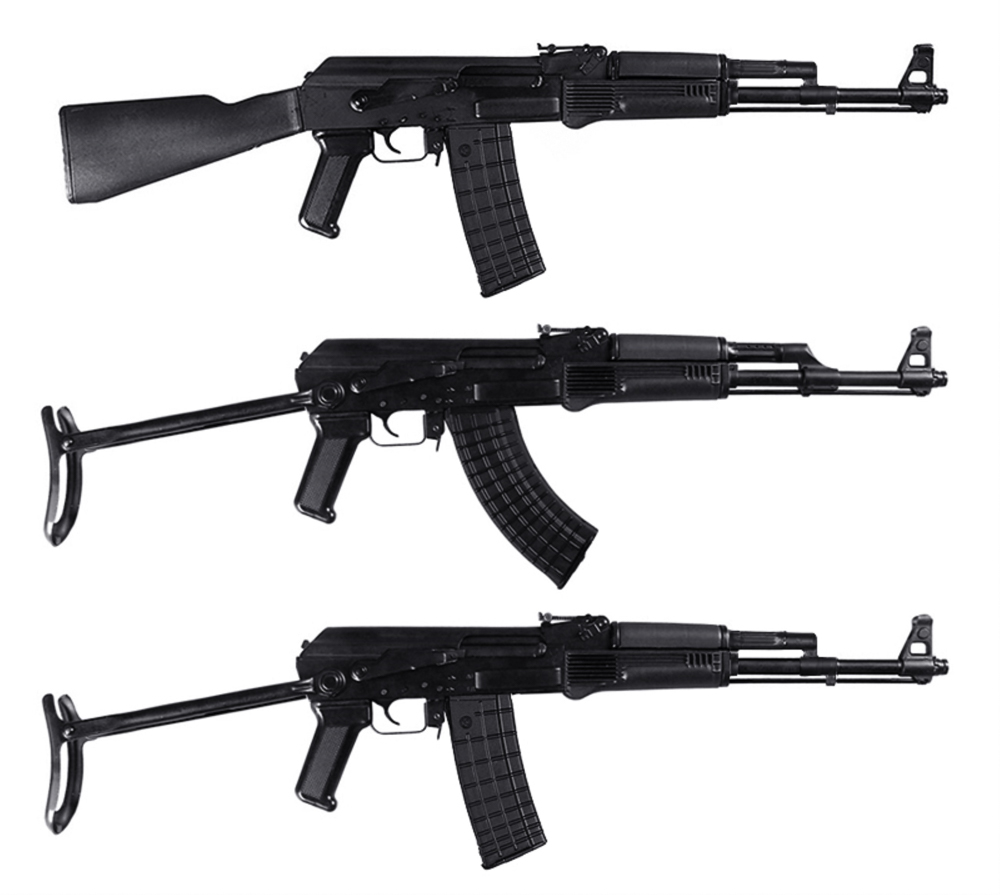
One more important component that evolved was the AK-74 bayonet. Although, I’m not sure if I would call what happened to the bayonet an evolution. In my opinion, it was changed for the worse. The original AK-74 bayonet was issued with later models of AKM rifles, especially the ones that were made by the Tula arsenal.
The new model had a rigid Bakelite scabbard that was lighter and did not require a rubber insulation sleeve. The bayonet’s Bakelite handle was redesigned and had two additional features.
Besides being a wire cutter, the bayonet could now also be used as a hammer and a pick. To do so, one needed to press the muzzle ring/handguard into the opening of the scabbard; the steel butt of the bayonet’s handle became a hammer and the blade a pick, with the scabbard being the handle.
Final bayonet design modification was made when the plum-colored AK-74 was adopted for service. The new bayonet had a spear-type double-edged dagger-like blade, with the handle and scabbard made from the same dark plum-color glass-filled polyamide as the new rifle’s furniture. This version of the AK bayonet lost its hammer and saw functions but retained wire-cutting ability.

The design of the new Avtomat included the following components and assemblies:
- Barreled action (receiver, front trunnion and barrel)
- Top receiver cover
- Front and rear sights
- Bolt and bolt carrier
- Muzzle brake
- Gas tube with upper handguard
- Trigger group
- Lower handguard and buttstock
- Magazine
[H3]Main Differences in Design and Innovation[/H3]
The main difference between the new Avtomat and its predecessor is the long and massive muzzle brake. This innovation, together with the reduction in caliber, allowed engineers to significantly reduce the recoil and improve the gun’s accuracy, especially when shooting in full-auto.

Although the compensator contributed to a significant decrease in recoil and thus increased accuracy, at the same time it significantly worsened the sound characteristics of the rifle. The powder gas now escaped not straight out of the muzzle, but out the sides, amplifying the sound of the shot.
The AK-74 design has basic components, assemblies and mechanisms identical to those of the original Kalashnikov design. The new rifle has nine assemblies unified with the AKM. Throughout the AK-74, 52 parts are identical to those on the AKM. The total volume of parts unification of the new Avtomat with the AKM was more than 70 percent.
This is clearly evident during the assembly and disassembly of the AK-74. All metal parts are protected from corrosion with a special paint-like coating. The main design changes were more external, with some minor inner-working elements. The fire controls of the new Kalashnikov remained unchanged. Many components of the AK-74 are made from casting blanks.
The barrel of the Avtomat is manufactured by means of rotary forging, during which the barrel and chamber are formed to a smaller caliber. All production was aimed at adapting a new model of the AK-74 to the production facilities of arsenals that had previously produced AKs and RPK machine guns of older modifications.

The new gun inherited the front and rear sighting system, consisting of the front post sight that can be adjusted for elevation and windage for sighting purposes, and the range-adjustable rear sight. Some models of the Avtomat are equipped with side rails for use with optical and night sights. The GP-25 or GP-30 underbarrel grenade launcher can be installed on all versions of the AK-74. As before, the AK-74 is issued with the standard bayonet.
The AK-74’s accuracy of automatic fire was improved in comparison with the AKM by almost two times; the accuracy of single fire by approximately 50 percent.
Ranges of fire are:
- At single ground and air targets — 500 meters (~547 yards)
- At group ground targets — 1,000 meters (~1,094 yards)
Range of direct (flat) shot:
- At chest size target — 440 meters (~481 yards)
- At full size humanoid silhouette — 625 meters (~684 yards)
Accuracy requirements for the AK-74:
- All four bullet impacts must fit into a circle with a diameter of 15cm (~6 inches) at a distance of 100 meters (~110 yards).
- The average POI (Point of Impact) must deviate from the POA (Point of Aim) by no more than 5cm (~2 inches) in any direction.
Note, again, that these were the parameters for accuracy for automatic rate of fire.
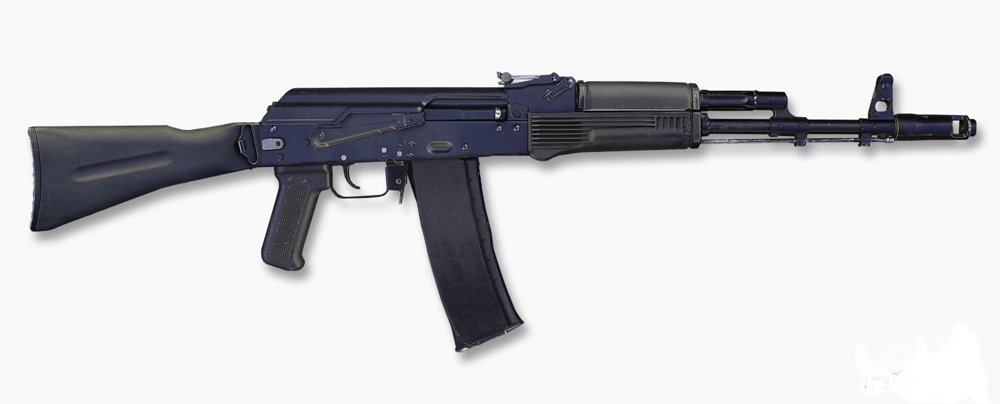
AK accuracy is checked by firing a single shot at a test target or a black rectangle 35cm (~18 inches) high and 25cm (~10 inches) wide affixed on a 0.5×1-meter (20×24-inch) white board. The accuracy check is done at the range of 100m, from the prone position with a rest, with no bayonet and with regular bulk 7N6 cartridges. The rear sight is set at “3.”
The method used takes into account the average deviation of impacts from the centerline of grouping and must consist of at least 50 percent of all impacts. The total includes the deviations of the bullets and the average impact points.
In general, there was a significant improvement in the accuracy relative to the AKM and even more so in comparison with the AK-47. As an example, here are the AK-74 accuracy results when looking at the total median deviation at a distance of 800m (vertical and horizontal respectively) compared to other rifles:
- AK-47 — 76cm and 89cm (30 and 35 inches)
- SKS — 47cm and 34cm (18 1/2 and 13 1/2 inches)
- AKM — 64cm and 90cm (25 and 35 1/2 inches)
- AK-74 — 48cm and 64cm (19 and 25 inches)
This excerpt is from AK-47: Survival and Evolution of the World’s Most Prolific Gun.

Next Step: Get your FREE Printable Target Pack
Enhance your shooting precision with our 62 MOA Targets, perfect for rifles and handguns. Crafted in collaboration with Storm Tactical for accuracy and versatility.
Subscribe to the Gun Digest email newsletter and get your downloadable target pack sent straight to your inbox. Stay updated with the latest firearms info in the industry.

![Best Concealed Carry Guns In 2025 [Field Tested] Wilson Combat EDC X9S 1](https://gundigest.com/wp-content/uploads/Wilson-Combat-EDC-X9S-1-324x160.jpg)


![Best 9mm Carbine: Affordable PCCs [Tested] Ruger Carbine Shooting](https://gundigest.com/wp-content/uploads/Ruger-Carbine-Shooting-100x70.jpg)
![Best AR-15: Top Options Available Today [Field Tested] Harrington and Richardson PSA XM177E2 feature](https://gundigest.com/wp-content/uploads/Harrington-and-Richardson-PSA-XM177E2-feature-100x70.jpg)
